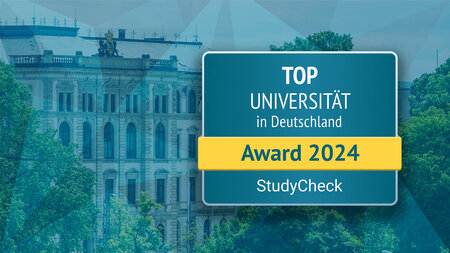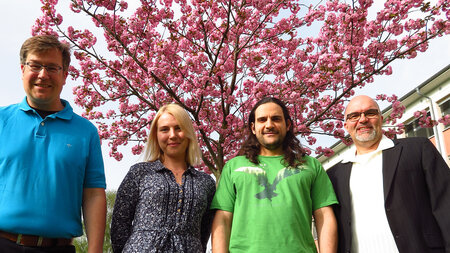“If You Want to Shape the Future, You Must Know Your Past”
Christine Lambrecht, Federal Minister of Justice and Consumer Protection, opened the traveling exhibition, titled “Die Rosenburg – the Federal Ministry of Justice in the shadows of its Nazi past”, at Chemnitz University of Technology
-
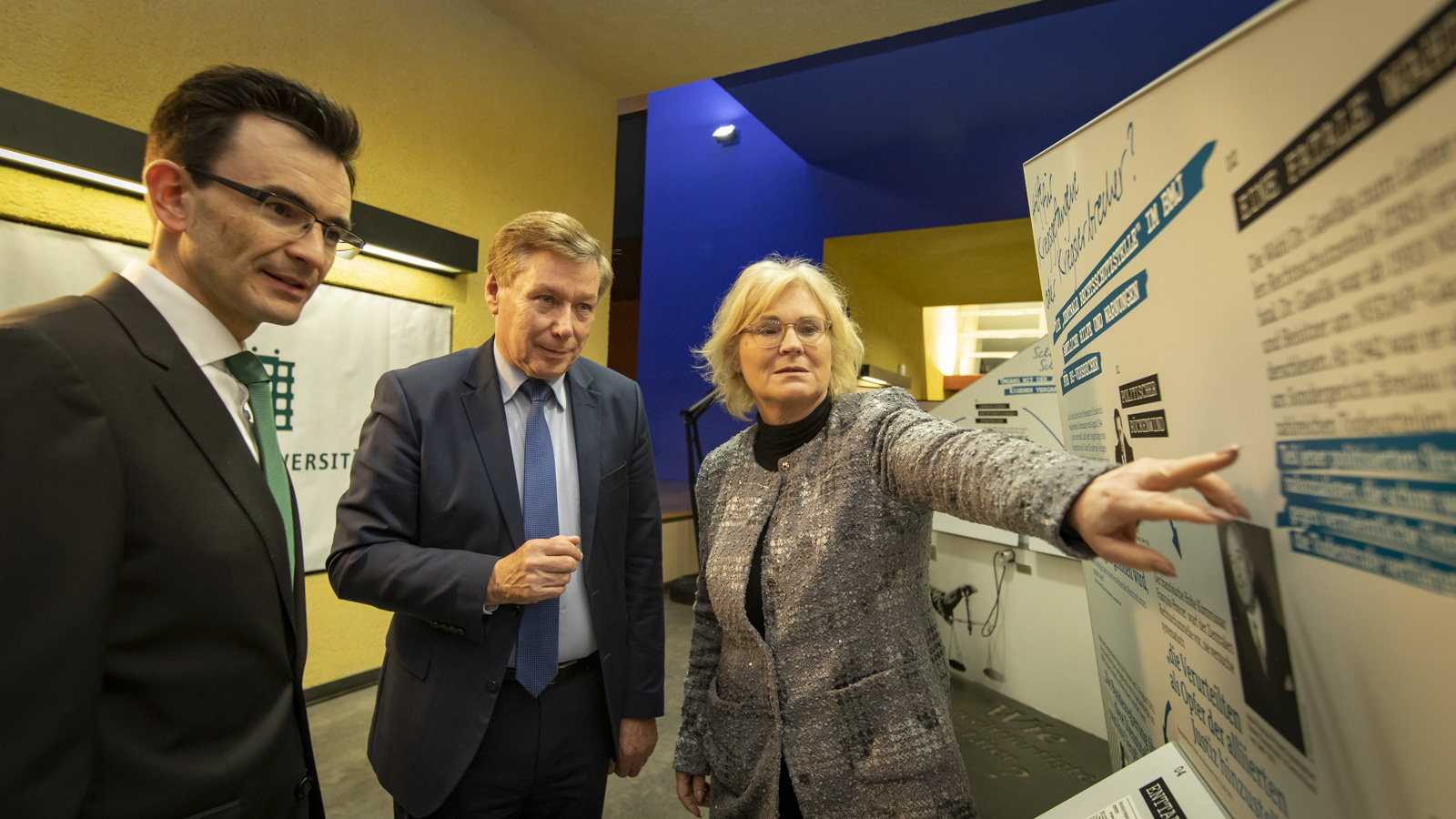
Taking a look at both the light and dark sides of the Federal Ministry of Justice: Federal Minister of Justice Christine Lambrecht speaks during a tour of the exhibition with Prof. Dr. Gerd Strohmeier, President of Chemnitz University of Technology, as well as Prof. Dr. Manfred Görtemaker, head of the “Die Rosenberg” project. Photo: Jacob Müller -
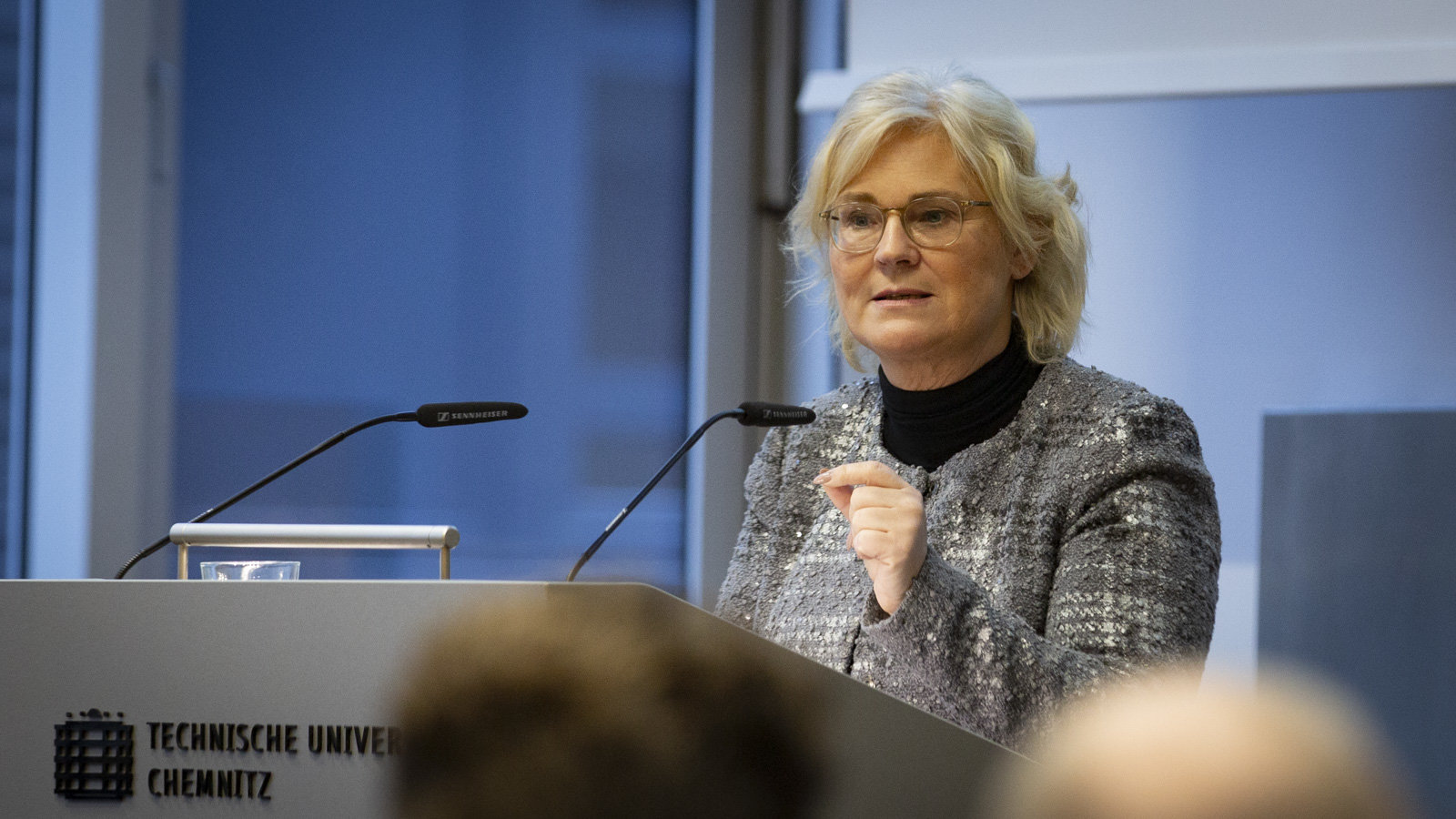
Christine Lambrecht from the Federal Ministry of Justice and Consumer Protection spoke at the opening of the exhibition: “The memory of dictatorship, war, the Shoah and the knowledge of the contributions that lawyers made, to contribute as henchmen in an unjust state – this obliges us to learn and draw from our own past.” In her speech, Lambrecht made a strong statement about Chemnitz University of Technology: “In the best sense of the word, you are diverse!” The Federal Minister is therefore quite pleased that the traveling exhibition is on display at the university. Photo: Jacob Müller -
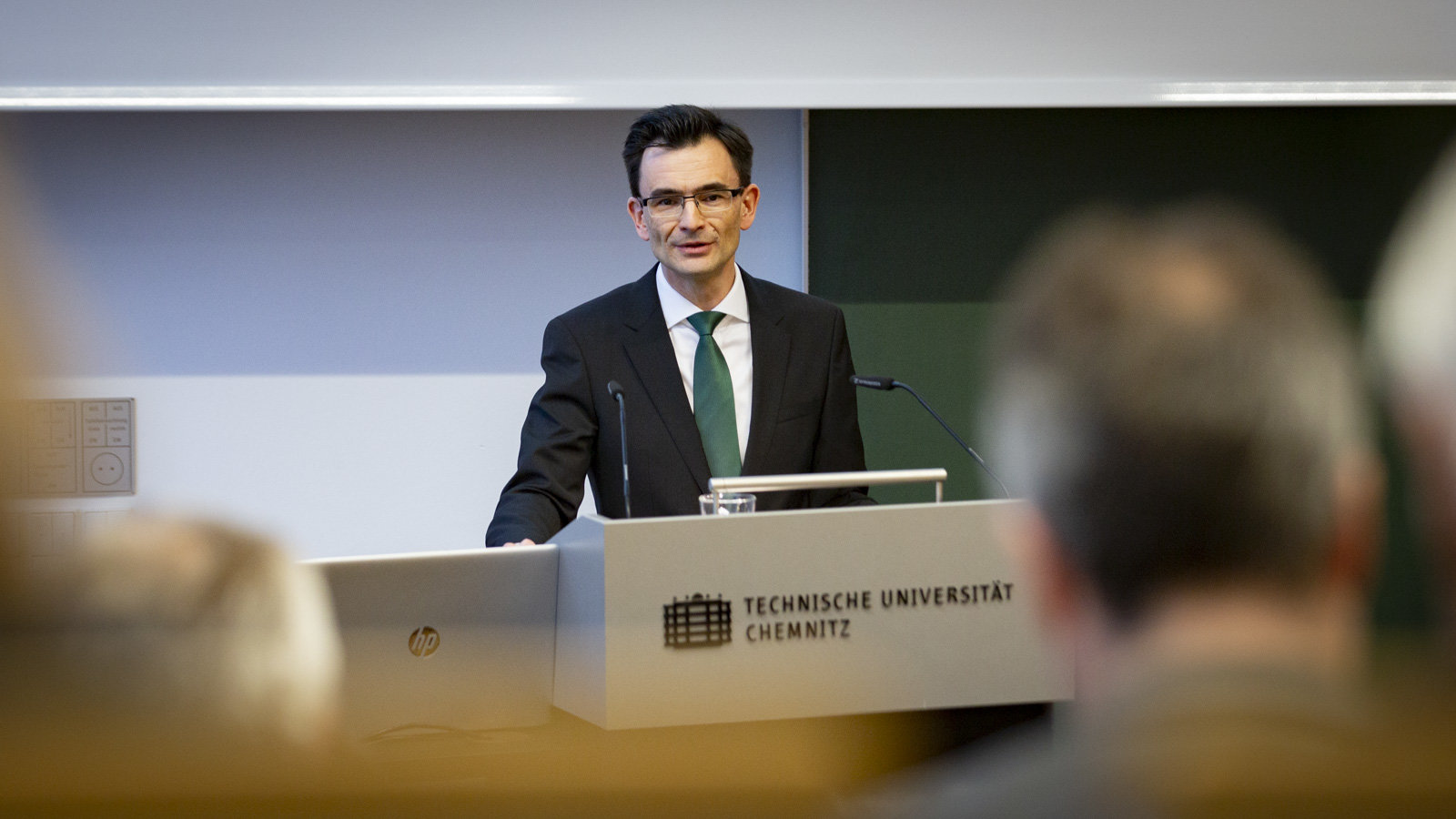
Prof. Dr. Gerd Strohmeier, President of Chemnitz University of Technology, showed the important place that the university holds to the city of Chemnitz: “Chemnitz University of Technology is an international university that promotes a sense of tolerance, togetherness and openness to the outside world.” Photo: Jacob Müller -
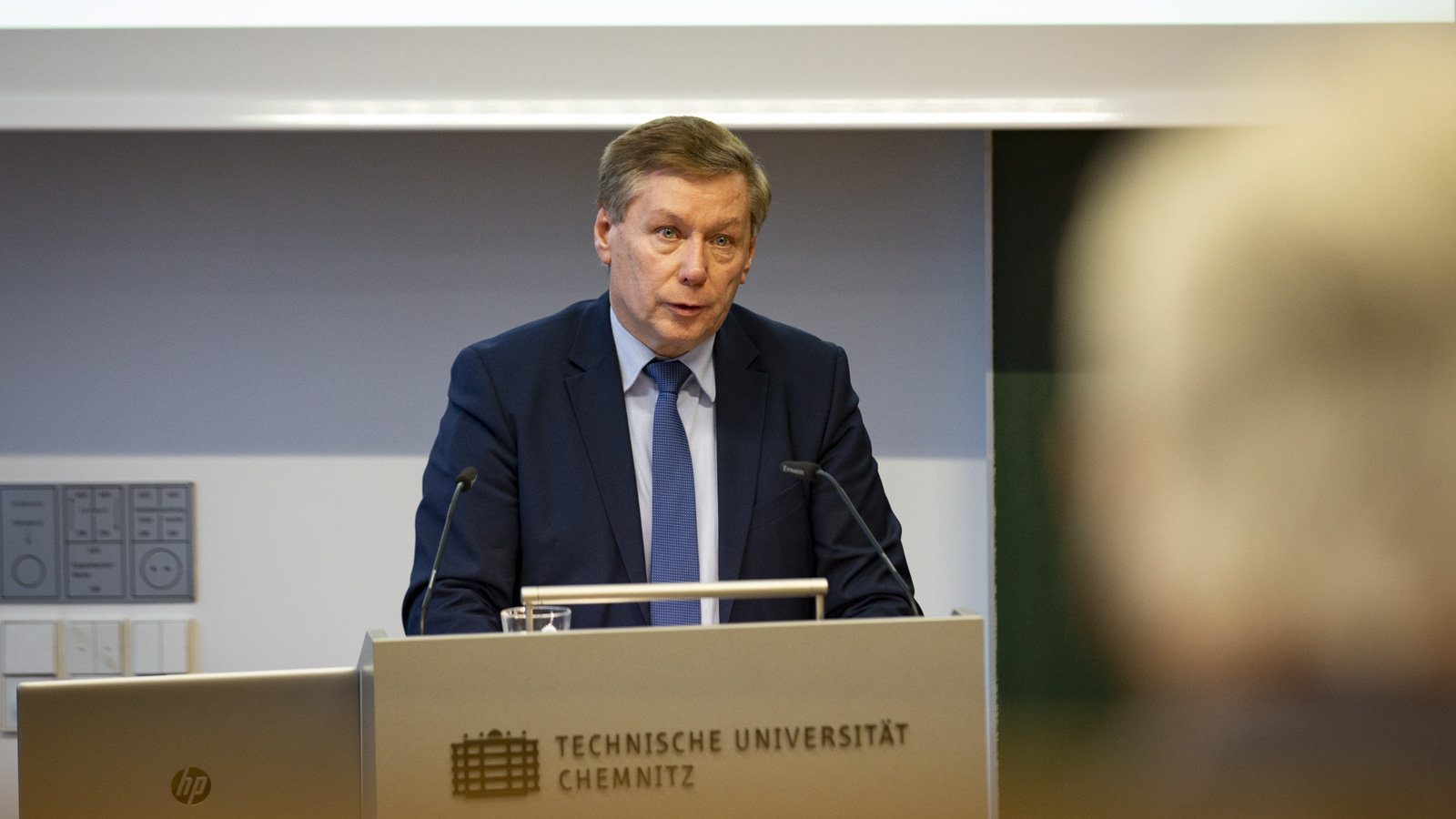
Prof. Dr. Manfred Görtemaker, head of the project “Rosenburg" and former chair of the Professorship of Modern History with a Focus on 19th and 20th Centuries at the University of Potsdam, demands: “German legal history should be a subject within legal education!” He went on: “Lawyers should not only have knowledge in their field, they should also have a conscience.” Photo: Jacob Müller -

A traveling exhibit was designed that shows the two sides of the Rosenburg: The front façade, light – and the shadowy back portion, with its dark backgrounds. Photo: Jacob Müller -
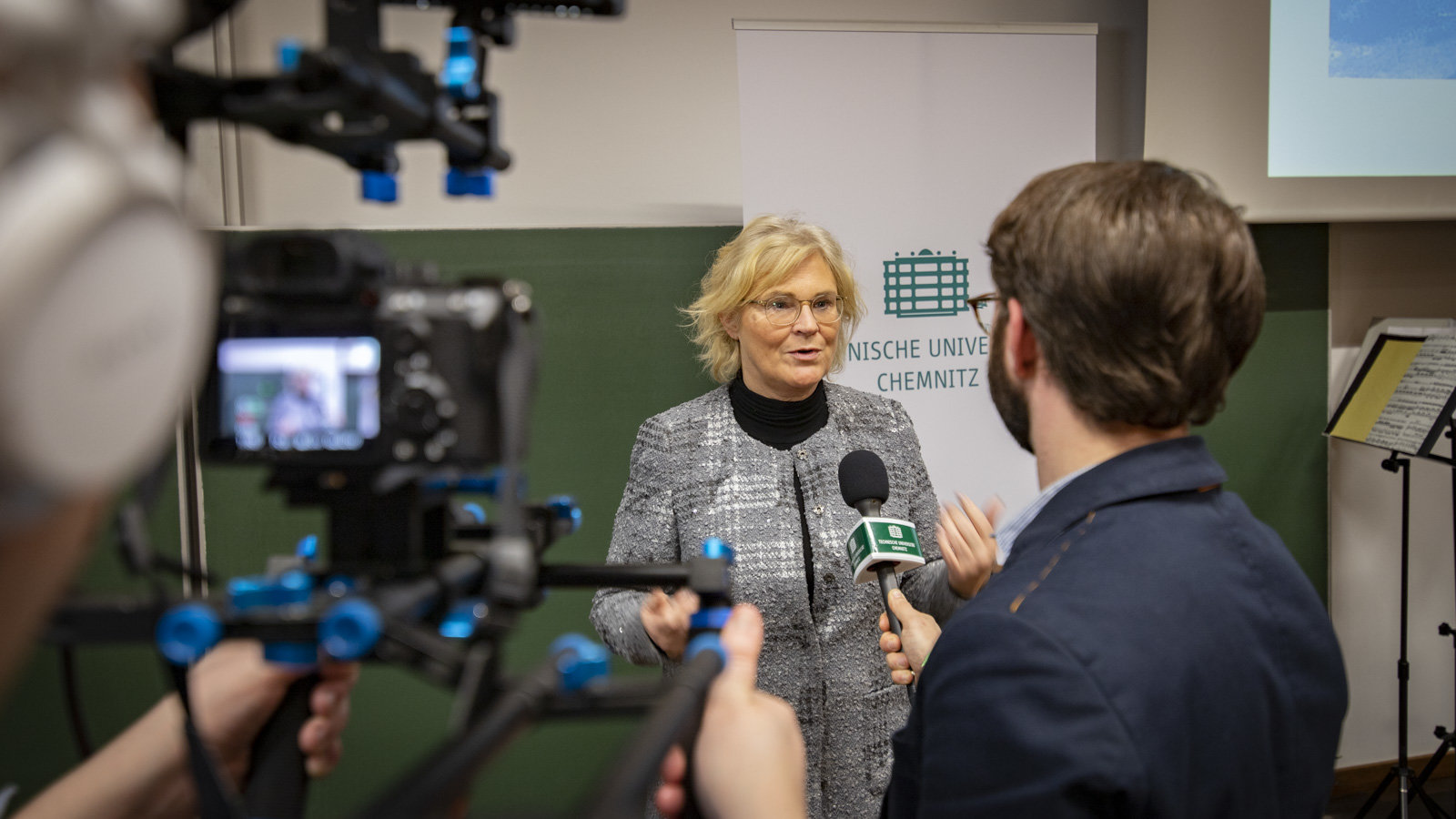
Christine Lambrecht, Federal Minister of Justice and Consumer Protection, also answered questions from “Uni aktuell”. A link to the video clip is at the end of this article. Photo: Jacob Müller
Until 5 March 2020 – Chemnitz Day of Peace – the traveling exhibition “Die Rosenburg – The Federal Ministry of Justice in the shadows of its Nazi Past” can be seen in the foyer of the Main Lecture Hall Building (Orangerie) at Chemnitz University of Technology. On 6 February 2020, the exhibit was officially opened by Christine Lambrecht, Federal Minister of Justice and Consumer Protection, and Chemnitz University of Technology President Prof. Dr. Gerd Strohmeier.
“If you want to shape the future, you must know your past,” said Lambrecht at the opening. She showed that the Weimar Republic was bound to fail, because too few democrats stood by it. With reference to the Federal Ministry of Justice and the ‘Die Rosenburg’ exhibition, Lambrecht said: “It is important to clearly point out injustice and to learn from past mistakes.” Also important to Lambrecht was to convey the knowledge gained from a scientific analysis of her department’s Nazi past to the public. She was very glad that the President of Chemnitz University of Technology had come to her with the intention of bringing the exhibition to Chemnitz University of Technology. For Strohmeier, it is depressing to see how so many representatives from such an incredibly large and unjust regime could gain a foothold in the Federal Ministry of Justice. Yet, it is also enlightening to see how the ministry is dealing with its past. "It is so very important in this context that a democracy cannot function without democrats, that a democratic structure needs a democratic culture, and that there is a difference between legality and legitimacy," said the university president at the opening of the exhibition.
Prof. Dr. Manfred Görtemaker, head of the “Die Rosenburg” project and former chair of the Professorship of Modern History with a Focus on the 19th and 20th Centuries at the University of Potsdam, presented excerpts of the scientific review of the Nazi past of the Federal Ministry of Justice as summarised in the “Rosenburg File” (see below for more information). He showed how the German lawyers managed to collectively denazify themselves, and in this context, he dealt with the so-called “Cold Amnesty”, which ultimately led to exemption from punishment for Nazi crimes.
The exhibition literally brings the past of the Federal Ministry to light on nine columns. Oversized lamps illuminate the formerly dark side and its involvement in the Nazi injustice. The exhibition explores the past with eyewitness reports, victim and perpetrator biographies and legal texts. The aim of this exhibition is to present the findings of the “Rosenburg Files” to a wider audience and thereby raise awareness of historical injustice.
Opening times of the exhibition: The exhibition can be seen in the foyer of the Main Lecture Hall Building at Chemnitz University of Technology, Reichenhainer Str. 90. Opening times: Monday to Friday from 7:00 – 20:30. Admission is free.
Background: From the “Rosenburg Files” to a traveling exhibition
With the founding of the Federal Republic of Germany, the Federal Ministry of Justice was created. It had its first office in the “Rosenburg”, a neo-Romanesque country house in Bonn-Kessenich. The executive staff, employed by Thomas Dehler, first Federal Minister of Justice, and his State Secretary Walter Strauß, were heavily involved in the Nazi regime. The number of former NSDAP members was regularly above 50 percent during the “Rosenburg period”, even growing above 70 percent at the end of the 1950s. In the Criminal Law Division, the percentage of NS-contaminated employees was 100 percent during this time. Double memberships in the SA were no exception. Some individuals had also served in the “Block Guard” of the Nazi regime. This is a tiny, yet consequential, detail that emerged from the scientific analysis of the department and the resulting facts that emerged out of the early Federal Ministry of Justice and the Nazi era as a part of the so-called “Rosenburg Project”. The personnel constellation was of serious consequence for the ministry’s output, and this brings up some possible explanations for why the prosecution of Nazi crimes dragged on for so long, the suffering of the victims ignored for far too long, and many victim groups, such as homosexuals or Sinti and Roma – continued to be discriminated against in the Federal Republic. The final report from the independent scientific commission appointed by the ministry in 2012 is 600 pages long, and the resulting book is called “The Rosenburg Files”.
To ensure that these historical findings do not simply disappear between two book covers, the “Rosenburg Files” were transformed into “Die Rosenburg – the Federal Ministry of Justice in the shadows of its Nazi past”. The exhibition was conceived in such a way that it clearly shows the two sides of the Rosenburg – on the one hand, the front – the light façade. On the other hand, the back – the shadowy side with its dark backgrounds. For further information: www.bmjv.de/rosenburg
Multimedia: In a video clip on the Chemnitz University of Technology YouTube channel, Federal Minister of Justice Christine Lambrecht explains why the exhibition is being shows at Chemnitz University of Technology (in German).
An Instagram story from the exhibition opening can be seen on the university’s Instagram channel (account required).
A short video report on the exhibition opening is also available on the university’s YouTube channel.
(Translation: Jeffrey Karnitz)
Mario Steinebach
10.02.2020

